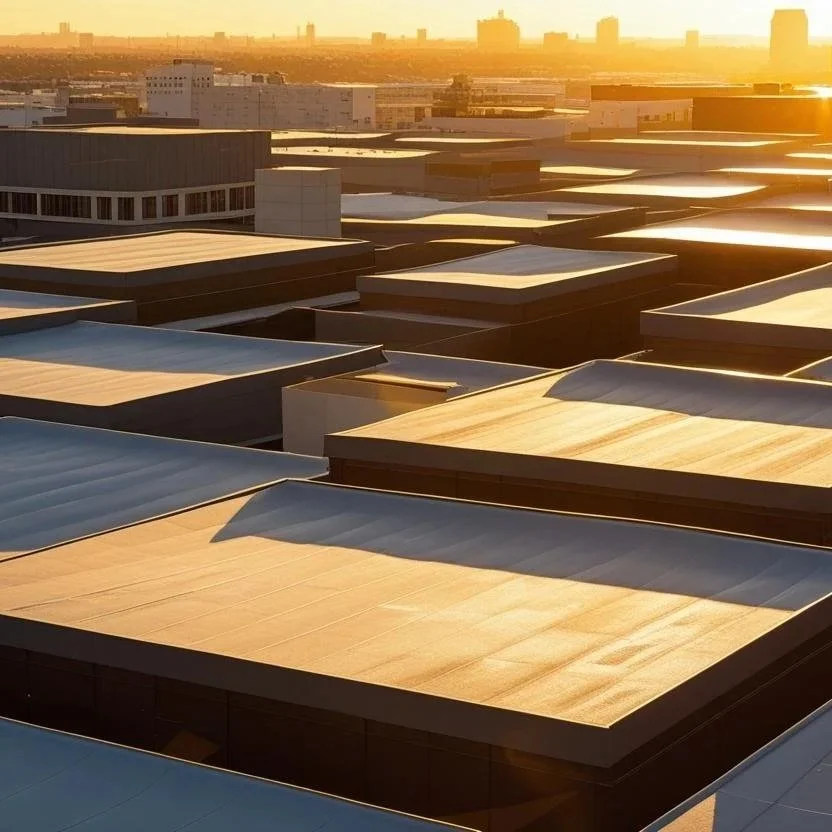The Secret Life of Flat Roofs and What They Can Do
For commercial buildings, modern homes, and creative remodels, they provide a reliable platform for performance and style without stealing the spotlight.
Flat roof installation is like that quiet friend who doesn’t demand attention but somehow knows everything. Clean, unassuming, and often underestimated, flat roofs offer more than just shelter. For commercial buildings, modern homes, and creative remodels, they provide a reliable platform for performance and style without stealing the spotlight.
Contractors who work with flat roofing systems know that looks can be deceiving. A flat roof might appear simple, but it has a lot going on beneath the surface. Drainage, slope, material compatibility, and insulation all demand careful planning. It’s not just about rolling out some membrane and calling it a day.
The Low Profile That Offers High Impact
Flat roofs work hard behind the scenes. They maximize usable interior space, simplify HVAC placement, and make solar panel installation less complicated. Unlike steep-pitched roofing, they offer walkable access for maintenance teams, rooftop gardens, or the occasional building inspector who forgot their sunscreen.
That low profile also gives architects more freedom. Modern home designs often favor horizontal lines, large windows, and minimalist aesthetics. A flat roof complements all three. On commercial properties, it allows for a sleek silhouette while hiding mechanical systems out of sight.
It’s Not Really Flat, But Let’s Keep the Secret
Professionals know that flat roofs aren’t actually flat. Every flat roof installation includes a slight pitch to promote water runoff. It’s subtle, usually between a quarter and half an inch per foot, but crucial. Standing water can lead to leaks, blistering, and the kind of puddles that make pigeons far too comfortable.
Getting that slope right requires expertise and the right materials. Tapered insulation boards, built-up substrates, or cleverly designed framing help the water find its way to internal drains or scuppers. No one wants to play the rooftop guessing game after heavy rain.
A Parade of Materials With Their Personality
Flat roofs come with their own cast of characters when it comes to materials. Each has strengths, quirks, and a fanbase of dedicated installers who swear by their favorite.
TPO (Thermoplastic Polyolefin) is a popular single-ply membrane known for its reflective white surface. It resists UV rays, welds easily at seams, and performs well in warm climates where sun exposure is constant.
EPDM (Ethylene Propylene Diene Monomer) is the smooth jazz of flat roofing. It’s rubbery, flexible, and can be laid in large sheets with minimal seams. EPDM is convenient for roofs with numerous corners or penetrations.
Modified bitumen, often installed with torch-down or cold adhesive, offers a time-tested hybrid between traditional built-up roofs and modern membranes. It’s durable, rugged, and likes to be layered up like it’s heading into winter.
PVC roofing offers high chemical resistance and strong seams. It costs a little more than its cousins, but performs like a workhorse in restaurants and buildings with greasy exhaust systems.
Installing Flat Roofs Without Flatlining the Project
Flat roof installation requires more than just favorable weather and a few rolls of material. The process begins with evaluating the substrate. A solid deck, whether it’s concrete, steel, or wood, sets the tone for everything that follows. Contractors inspect for softness, moisture, or damage and repair what’s needed before the first layer goes down.
Insulation comes next. Rigid boards help manage thermal transfer and shape the subtle slope that guides water to the drain. Fasteners, adhesives, or ballast systems hold them in place depending on the building’s needs.
Next comes the membrane or multi-layer system. Each seam, corner, and penetration becomes a focal point. Roofers heat-weld, glue, or seal those areas with precision, depending on the material. Drains, vents, and skylights receive special attention with flashing and reinforcement.
It’s not fast-food roofing. Professionals move with purpose but also patience. A flat roof rewards craftsmanship and punishes shortcuts.
Drainage That Doesn’t Mess Around
A flat roof without proper drainage is like a bathtub with a plugged drain. Water doesn’t magically disappear. It needs somewhere to go. That’s where roof pros come in with cleverly placed scuppers, internal drains, and edge details that move moisture without relying on gravity’s charm alone.
Maintenance access also plays a role. Roofers often design systems where technicians can safely navigate to drain inlets without tiptoeing over sensitive seams. It’s about thinking ahead so the building can operate smoothly long after the tools have been packed up.
Energy Efficiency Without the Drama
Flat roofing systems contribute to energy savings without demanding flashy upgrades. Light-colored membranes reflect sunlight, reducing indoor heat gain during the summer. Added insulation in the roofing system improves temperature regulation year-round.
Some clients ask for vegetative roofing systems that turn a flat roof into a green oasis. Others prefer reflective coatings to enhance existing membranes and add an extra layer of protection. Either way, the flat roof becomes part of the building’s energy story instead of just a cover.
Flat Roofs Make Room for Creativity
Flat roofs create possibilities that pitched roofs simply can’t offer. Rooftop patios, container gardens, and outdoor workspaces transform unused space into functional real estate. For businesses, that might mean a lounge area or solar installation. For homeowners, it might mean a rooftop retreat complete with string lights and a morning coffee ritual.
Professionals help turn those ideas into reality by factoring in load-bearing capacity, waterproofing, and traffic resistance. Membranes and surfacing choices get upgraded to handle foot traffic, furniture, and the occasional salsa spill during rooftop taco night.
Durability Is in the Details
A well-installed flat roof doesn’t blink at wind, rain, or sun. Materials today are engineered to last between 20 and 40 years, depending on type and maintenance. That lifespan depends heavily on the details. Flashing at edges and around penetrations, reinforcement at corners, and properly sealed seams are the difference between dependable and disposable.
Regular inspections and preventative maintenance stretch those years further. Professionals often catch small cracks, clogged drains, or surface wear before they lead to larger repairs. Flat roofs don’t need babysitting, but they do appreciate a good annual checkup.
Flat Roofs Play Nicely with the Environment
Sustainability and roofing are no longer strangers. Many flat roof materials are recyclable, and installation methods continue to evolve to reduce environmental impact. Cool roofs, green roofs, and solar-ready surfaces give building owners options that support environmental goals without sacrificing practicality.
Some flat roofing systems qualify for energy rebates or meet standards like LEED. Contractors familiar with these certifications help clients make choices that align with budget, design, and sustainability goals.
When Repairs Call, Response Shouldn’t Be Flat
Flat roof repairs require the same precision as installation. A tiny puncture or seam failure can lead to water infiltration faster than most people expect. Professionals use infrared scanning, core sampling, and surface evaluation to identify the issue before reaching for the patch kit.
Repairs might involve resealing a seam, replacing a section of membrane, or correcting slope issues caused by settling or structural movement. The goal is always to restore performance while preserving the roof’s original design and warranty status.
Warranty Terms That Favor the Prepared
Flat roof warranties vary depending on material and installation method. Some manufacturers offer 10 to 30 years of coverage, while others include material and labor for specific issues. The key to making those warranties stick is proper installation and documentation.
Certified contractors not only follow best practices but also maintain training on the latest updates from manufacturers. That partnership means clients receive warranty protection and the ease that comes with it—no fine print confusion, just coverage that works when needed.
A Flat Roof That Knows How to Perform Quietly
Flat roofs don’t ask for headlines. They show up, do their job, and make everything else in the building look good. When designed and installed by professionals, they deliver energy efficiency, usable space, and long-term savings in one clean package.
A flat roof is more than a lid. It’s a performance surface, an architectural statement, and a hardworking part of the building’s daily life. When it comes to flat roof installation, there’s nothing plain about getting it done right.

